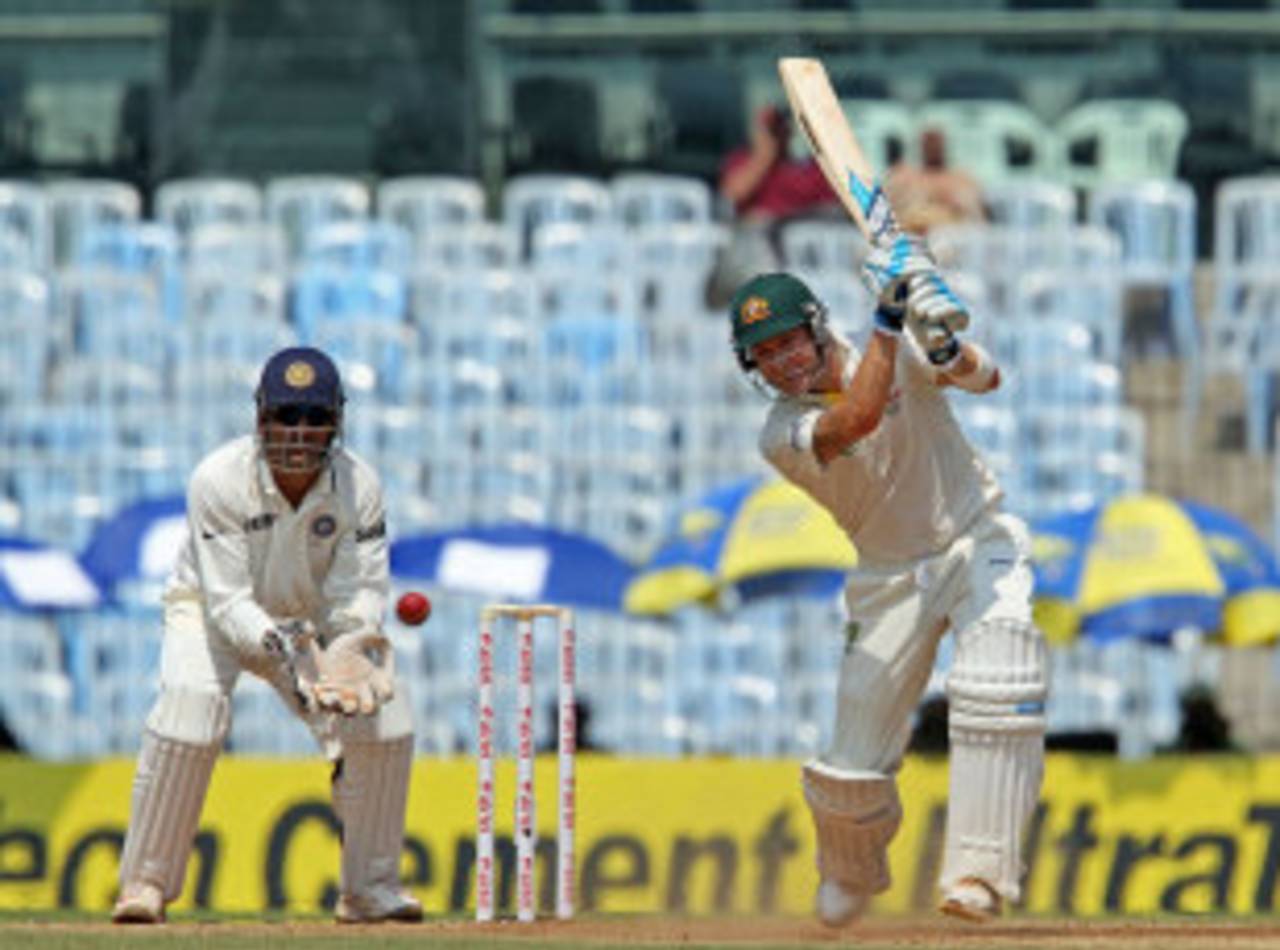Back in the late 1980s there was something to be said for Australians advancing towards their opponents. Pat Cash's serve-and-volley game earned him a Wimbledon title in 1987. The previous year Dean Jones danced down the pitch and into cricket folklore with a nimble-footed tour of India that included a heroic double-century in Madras. They trusted their skills and judgment and knew that if executed properly, their game-plan was sensible. It would put the pressure back on their adversaries.
These days a conservative mindset has infiltrated both sports. Nearly every top tennis player prefers to stand at the baseline and trade in rallies instead of gambling on an approach to the net. And batsmen, at least those schooled in Australian conditions, stay in their crease, unwilling to risk being beaten by cricket's equivalent of a passing shot. Except, that is, for Michael Clarke.
On a dusty, reddish Chennai pitch resembling the Roland Garros clay surface, Clarke reminded his tentative team-mates why positive footwork is such an important part of batting in India. He also showed them that footwork is not simply about rushing at the bowler. It is about choosing the right ball and remaining light on your toes, allowing for quick adjustments to stop the ball whizzing past for a winner. It is about mixing things up, sometimes going deep in the crease, sometimes far outside of it.
Of course, such a method does not suit all batsmen. The bigger, heavier Moises Henriques said after play that he was simply not nimble enough to emulate Clarke. Had he tried to he would have looked like a wrestler attempting ballet. But some of the top-order men can certainly take note of Clarke's display. They have five weeks to make a study of it.
Not only did Clarke rescue Australia from a precarious 153 for 5 after he chose to bat on the opening day of the series, he went to stumps with his 23rd Test century. It was not chanceless - he should have been given out caught at short leg on 39 - but few of the 22 hundreds that came before it were much better, considering the way the other batsmen struggled.
The rest of Australia's top six fell to the spin of R Ashwin. Several had been stuck on the crease, unsure of whether to move forward or back. Another, Ed Cowan, tried to use his feet but overcommitted. Clarke was the only one who found that perfect middle ground.
David Warner scored 59 and hit six boundaries but about as many strokes went in the opposite direction than the intended. Occasionally he advanced but generally he was glued to the crease. Staying back to fullish balls that could have become full tosses or half-volleys was risky and eventually cost him when he was trapped in front. Shane Watson was also lbw playing back. Phillip Hughes played back and played on.
Cowan showed Clarke-like intent but whereas Clarke's lightness allows him to alter course if the bowler goes wide, Cowan left himself no wriggle room and was beaten by Ashwin's equivalent of a winner down the line. As the first man out, his mistake contributed to keeping the others firmly planted in safe ground.
Matthew Wade employed the big lurch forward while keeping his back foot in the crease. On the rare occasions that he advanced, he looked as nervous as a toddler dipping a toe in the ocean for the first time. Ashwin got Wade lbw as well, lunging from the crease.
Henriques used the same method as Wade, a healthy front-foot stride. He was impressively patient but also fortunate that as his innings of 68 wore on, Clarke at the other end was ruining Ashwin's rhythm. The bowlers couldn't guess if Clarke was coming at them or going deep in the other direction. When he advanced, he did not err. If Rafael Nadal comes to the net on the wrong point he has the next one to make up for it. Not so for Clarke.
He was at his best with a pair of consecutive boundaries off Ravindra Jadeja, one through cover and one through midwicket. Both times he danced gracefully down the wicket and reached the pitch of the ball. Fittingly, his fifty came up with a six lofted over long-on. By smothering Ashwin's delivery he gave it no chance to turn.
In reaching 103 not out at stumps, Clarke passed Don Bradman's career Test run tally and the 7000-run mark. He took his record since becoming Australia's permanent captain to 2350 runs at 75.80 with nine centuries. Another captain who leads by his deeds, Alastair Cook, was talismanic on England's triumphant tour of India late last year. If Clarke can be for Australia, who knows what is possible?
But he cannot do it alone. There are many lessons Clarke will need to teach his developing team in the coming weeks and months. For now, handling spin is the priority, for 73 overs of it were bowled on the opening day of the series. Australia can only hope his apprentices were taking notes. The serve and volley might be dead but cricket's equivalent still has its place.
Brydon Coverdale is an assistant editor at ESPNcricinfo. He tweets here
